

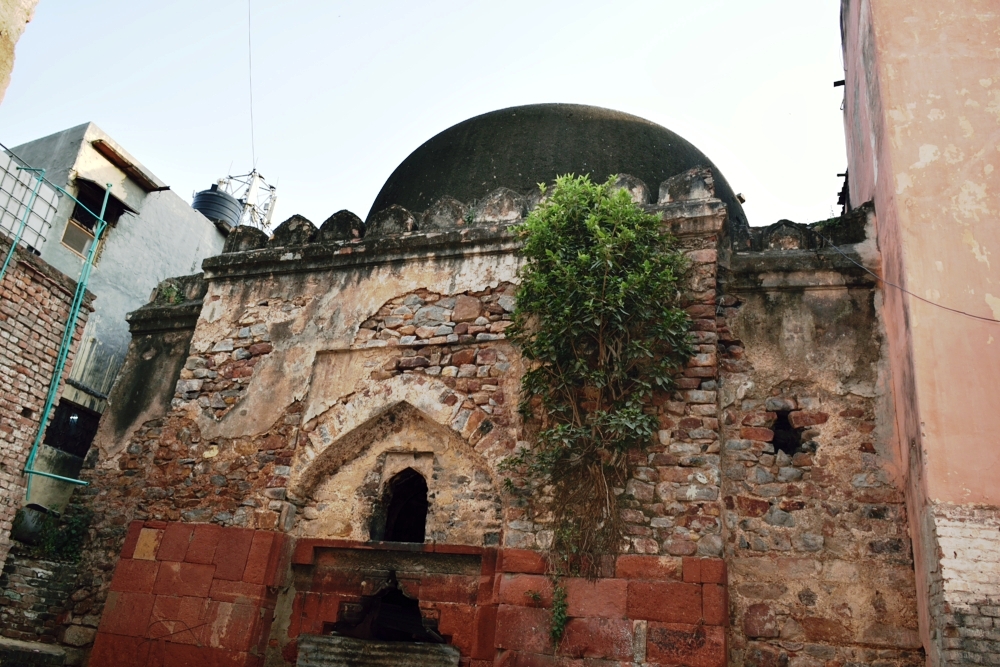
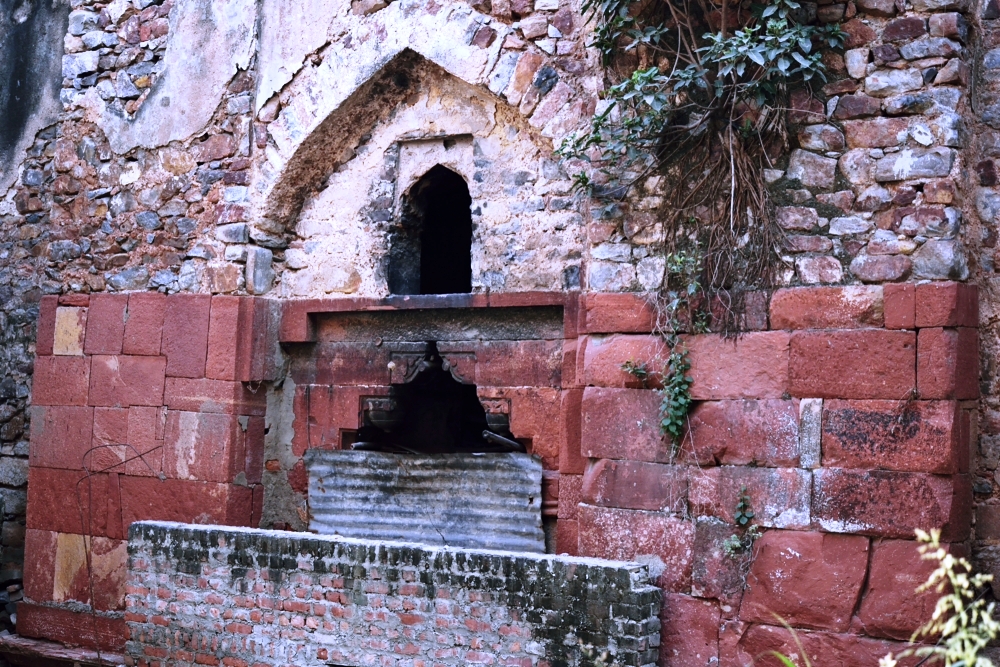
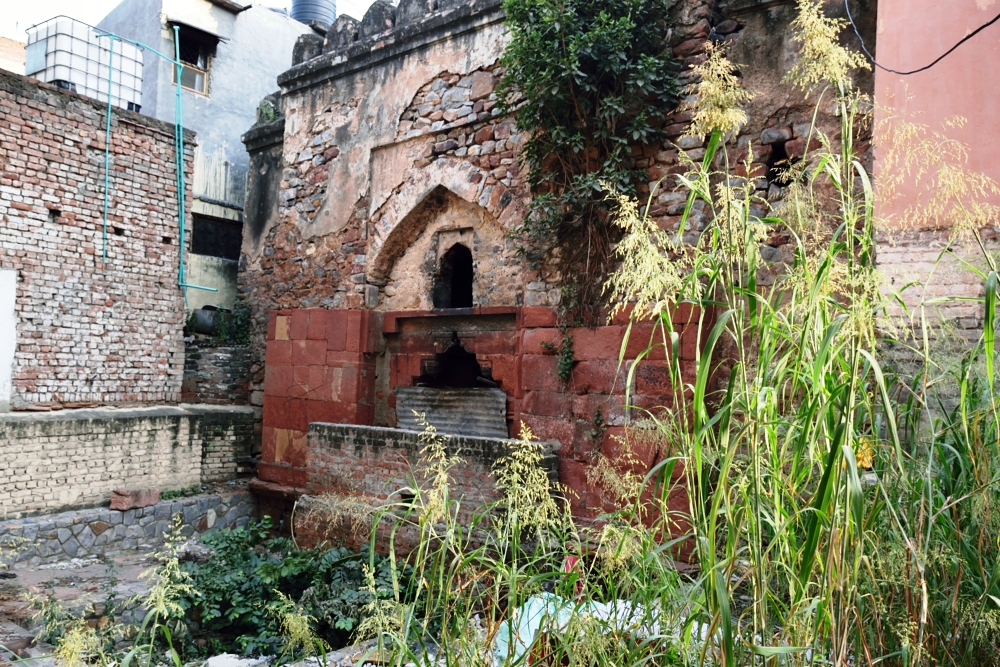
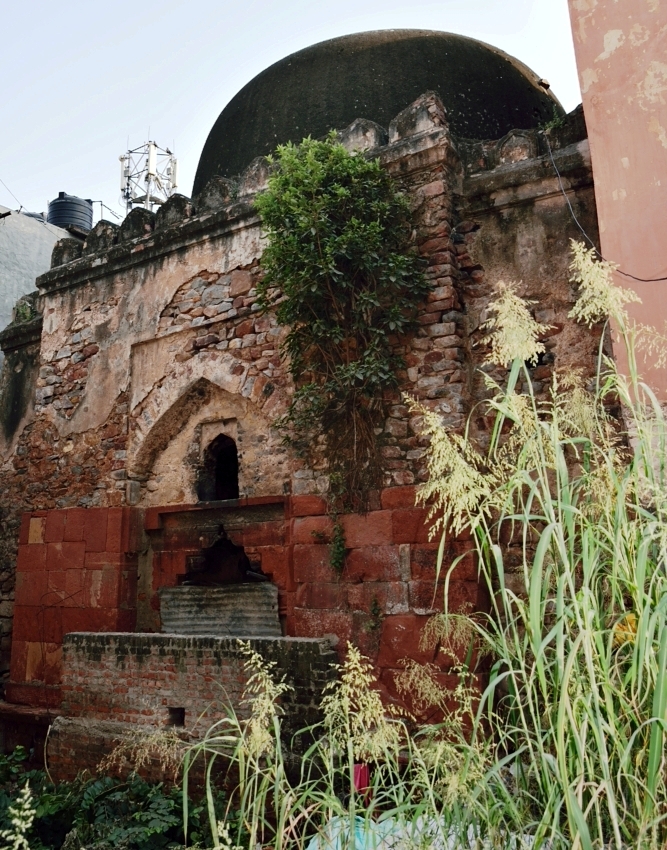
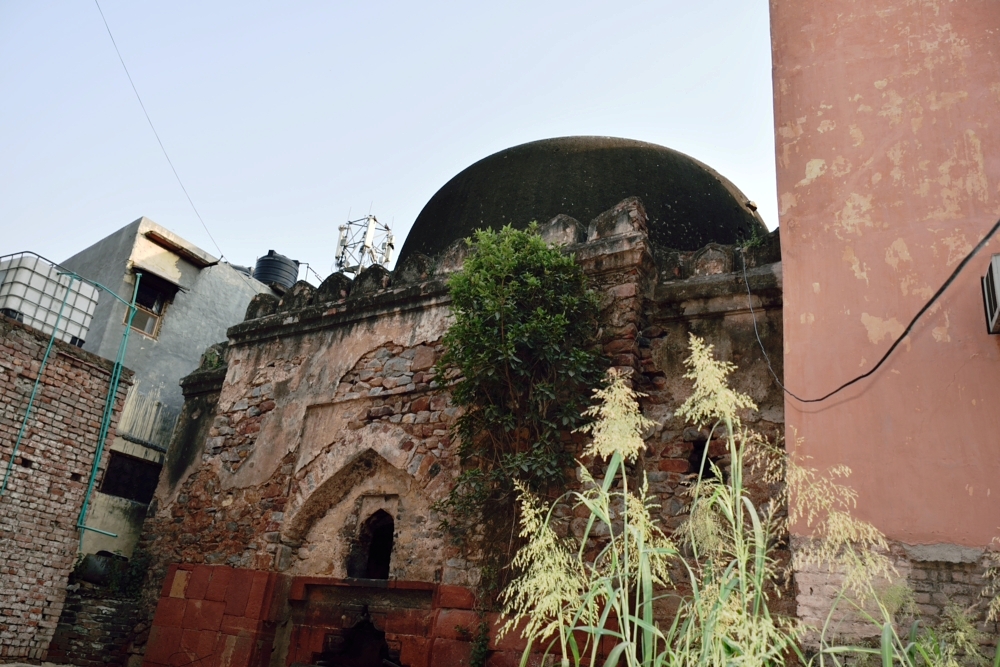
Approach: Approximately 500 meters to the west of PS Nizamuddin bus stop, on the way to Baoli Gate Road, Hazrat Nizamuddin Dargah Airport: IGI Railway Station: Nizamuddin Bus Station: Nizamuddin
The tomb in question is a magnificent example of Lodi architecture, although there is no significant historical information available regarding its origin or the individual to whom it belongs. It is designed with a square plan and features a massive plastered dome that covers the structure. Each side of the tomb has a typical Lodi entrance, characterized by an outer enclosing arch and a corbelled door frame. Deeply recessed arches are present on all four sides, with the western arch being blocked by a raised brick wall. The vibrant red sandstone on the western side contrasts beautifully with the rest of the structure, adding a touch of color to its imposing presence. The parapet is topped with a kangura battlement, which is a typical feature of Lodi architectural style. The north and south arches of the tomb are now blocked by the adjacent high-rise buildings, significantly affecting the tomb?s accessibility. Currently, the building can only be accessed through a very narrow lane, as many of the original openings have been closed to facilitate its use as a residence. The inspection of the interior of the tomb was not allowed. Inside the tomb chamber, a sandstone grave is located at the center, and in front of the eastern entrance, there is an enclosure containing several graves, adding to the tomb's historical and cultural significance. The structure is primarily built using rubble masonry, which is coated with plaster, and it incorporates local dressed stone in its construction. The lower half of the western side is adorned with red sandstone, further enhancing the visual appeal of the structure.
Year of Built: 15th - 16th Century
Address: Approx. 40 m to the north-west of Barah Khambha, Nizamuddin Village
Country: India
State: Delhi
District: South Delhi
Pincode: 110024
Longitude: 77 14 23
Latitude: 28 35 28